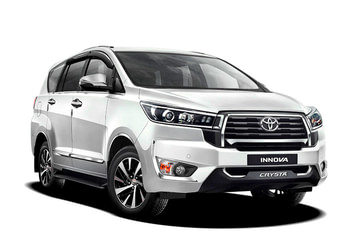2018 Toyota Yaris review, road test
Will the ever-dependable Toyota badge and class-leading safety equipment be enough to lure buyers towards this mid-size sedan, despite its premium pricing?
Published on Jun 07, 2018 06:00:00 AM
78,566 Views
Follow us on



It’s a sea of beige on the inside and that makes the cabin feel bright. The asymmetrical dashboard looks nice and the matte silver highlights lift its appeal. However, there aren’t any soft-touch plastics to speak of and the materials used feel a bit hard, shiny and scratchy. There’s also artificial stitching on the dash and steering to make them appear like they have a layer of leather on them. What’s nice, though, is the dash fascia, which sports a piano-black surface with some premium-looking silver buttons for the climate control. Also, the fascia’s spindle-like shape is very Lexus-like. The instrument dials have large fonts that are easy to read, but the sheer amount of reflection on the angled instrument cluster housing, especially during the day, seriously hampers readability.
The front seats are controlled electrically, which is a segment-first, and offer a good range of adjustments. The seats are wide and accommodative, but fall short in terms of lumbar support, compromising comfort for longer journeys. Also, there are certain ergonomics that could have been executed better. For starters, the front armrest is unusable for shorter drivers as the entire console is placed too far behind and there’s no sliding function on offer either; it can be used as an elbow rest at best, and that too only if the front seat is pushed further back. The steering is placed too close to the dashboard, which makes the absence of telescopic adjustment even more noticeable. Also, the driver footwell is cramped, leaving no space for a dead pedal; even the CVT version misses out on one.

Toyota has added noise and vibration control glass which works well to keep the ambient noises to a minimum. The windscreen is specially designed to keep solar and other harmful rays out. The Yaris’ air con performs well and cools the cabin rapidly. What’s nice is that rear passengers get a roof-mounted blower with a single slat on each side, to channel air effectively; this placement works better than the conventional one in other cars.
The rear seat of the Yaris is comfortable, although the backrest is quite upright. The seat is fairly wide and support is adequate, and while leg- and knee room are sufficient, headroom for taller occupants is tight. In terms of safety, all three passengers seated here get adjustable neck restraints and three-point seat belts. The middle passenger, however, will find the front armrest console to be slightly jutting into the knee room.

In terms of practicality, the Yaris gets a large bottle holder in each door, two cupholders ahead of the gear lever and two in the rear armrest. There’s also a cavity beside the handbrake to store your smartphone (in a horizontal, upright manner), and a cleverly thought-out 12V accessory socket right behind it. And except for one in the audio system, Toyota hasn’t given the Yaris any USB charging slots; there are two 12V sockets for rear passengers beneath the armrest console, though. The divided glovebox is large and comes with a cooling vent, which is useful. The Yaris gets a large 476-litre boot, which is small in terms of volume by class standards, but it’s well-shaped and the 60:40 split folding rear seats (a segment-first) give it a lot of luggage-carrying versatility.
Copyright (c) Autocar India. All rights reserved.
















.jpg?w=234&h=156&q=90&c=1)

Comments
Member Login
Personal Details
No comments yet. Be the first to comment.